One of the functional medicine guys I follow once said that our genetic code is hard-wired for a specific environment. When that environment changes faster than our genes can evolve, a mismatch occurs. This mismatch is the primary driver of the chronic disease epidemic and the ridiculously high rates of heart disease, cancer, Type 2 diabetes, and neurological issues like Alzheimer’s and dementia.
In other words, our bodies were built for an environment that no longer exists. That makes it incredibly difficult to stay healthy. And sometimes, I get frustrated by the realization that everything is stacked against us.
Just think about it for a moment. Artificial sources of light disrupt our circadian rhythm. Processed foods cause inflammation. Our day jobs make us sedentary. Our schedules and to-do lists induce stress and anxiety. And it’s nearly impossible to get truly clean drinking water.
I could go on.
It’s a mess. And it makes many people throw their hands up in the air, arguing that there isn’t much we can do to avoid the hazards of this modern life without making significant (and difficult) sacrifices.
Here’s the good news: there is hope, because there are individuals and small businesses (as well as some larger ones) who have realized that what we’ve been doing over the past decades clearly isn’t working.
Chronic disease and obesity rates are skyrocketing, young girls enter puberty way too early, and testosterone in men keeps declining — just to name a few of the implications of our modern lifestyles.
The question is this:
What can you do to improve your and your family’s health and well-being?
In this blog post, I’ll try to answer that question and offer tips and tricks that you can start implementing today.
Note that I’ve covered many of the topics I’ll be discussing in this article elsewhere on the blog, and each section below contains links to those resources. Think of this post as an entry point that ties together the most important aspects of living a healthy lifestyle, while also helping you determine how to learn more about the topics you’d most like to focus on.
In a nutshell, you can dramatically improve your health and well-being by following these eight recommendations:
- Make sleep your #1 priority. If you don’t sleep well nothing else matters. So take care of your sleep hygiene first.
- Feed your body the right food. Stick to a simple diet that humans and our ancestors have eaten for millions of years.
- Be physically active. The human body wasn’t made for sitting in front of a computer all day. You gotta move, lift heavy things and break a sweat. And you have to do these things every day.
- Manage your stress. While acute stress can be a literal lifesaver (for instance, when a sabertooth tiger is about to attack you), chronic stress can make you sick and age faster by altering your epigenetics.
- Reduce your exposure to environmental toxins. There is a 99% chance that the water you drink and the deodorant you use every day contains estrogen-like chemicals that disrupt your endocrine (hormones) system.
- Expose your body to the right stressors. The concept of hormesis suggests that what doesn’t kill us makes us stronger. While that’s not true in the realm of chronic stress, or when it comes to vices like cigarette smoking or alcohol consumption, exposing yourself to short-term environmental stressors such as cold water does improve your resilience.
- Be part of a tribe. Humans are tribal creatures and we have relied on others for support throughout evolution.
- Reconnect with nature. For millions of years, humans lived in harmony with nature, exposed to direct sunlight and fresh air. But most modern humans live under artificial junk light, breath contaminated indoor air, and never allow their bare feet touch soil.
Let’s dive into these eight categories a bit deeper so you can broaden your understanding of the problem. I believe by doing so, it will be easier for you to identify and implement the improvements that will have the most impact, based on your current lifestyle and individual circumstances.
1. Sleep
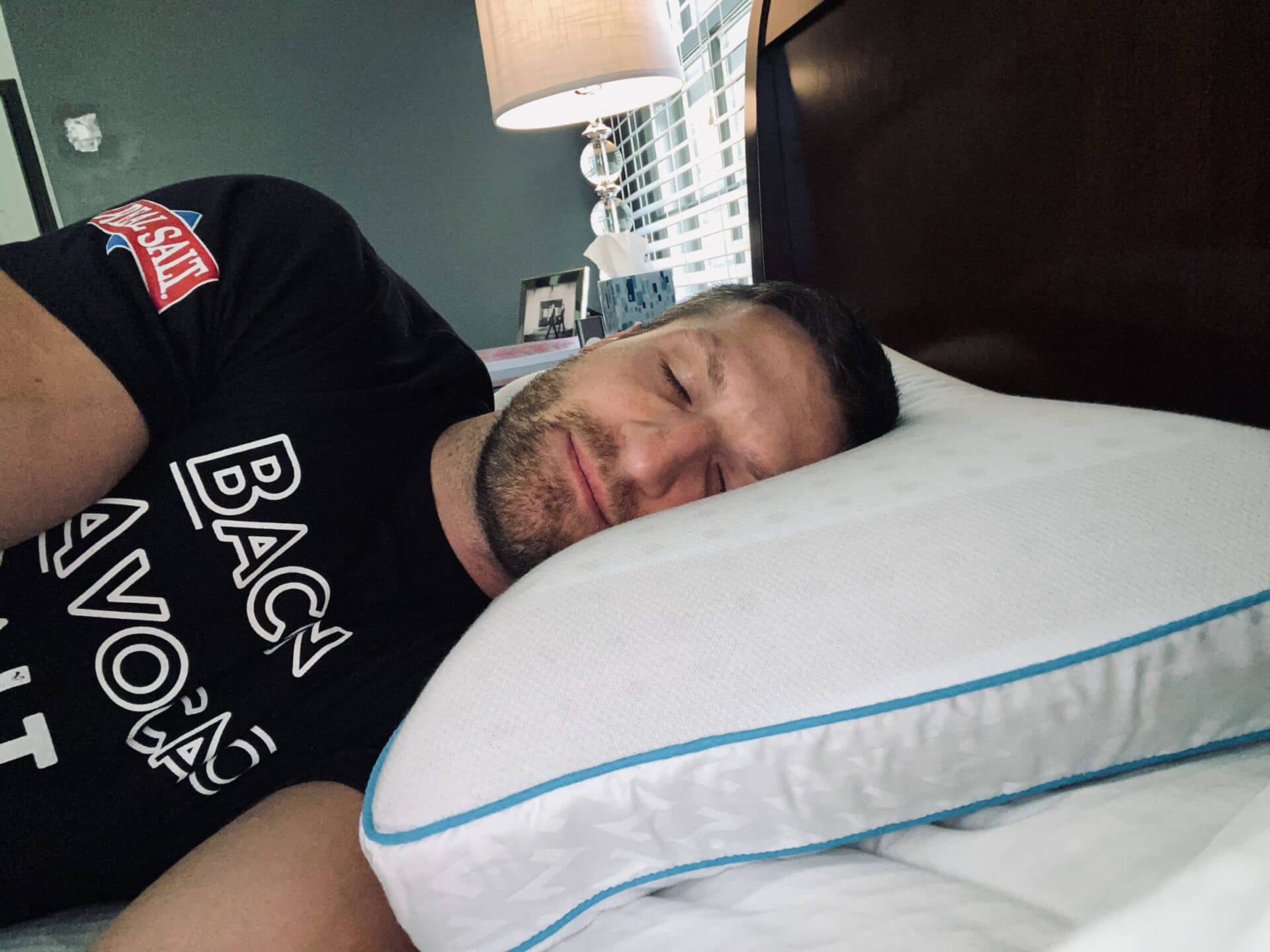
I strongly believe that sleep is the foundation of a healthy life. In other words, if you don’t sleep well, your health suffers — regardless of what else you do. Much like you can’t out-exercise a bad diet, you can’t make up for poor sleep by eating well.
While there is a lot that scientists don’t yet know about sleep, what they do know suggests that sleep is a highly complex yet crucial process that influences how well the body functions.
Many people have the misconception that not sleeping enough is a sign of strength. Somehow being able to “get by” with only a few hours of sleep is considered a badge of honor. I think it’s a badge of ignorance, and a practice that leads to decreased mental and physical performance in the short-term and chronic disease in the long-term.
Top 8 Tips to Improve Sleep
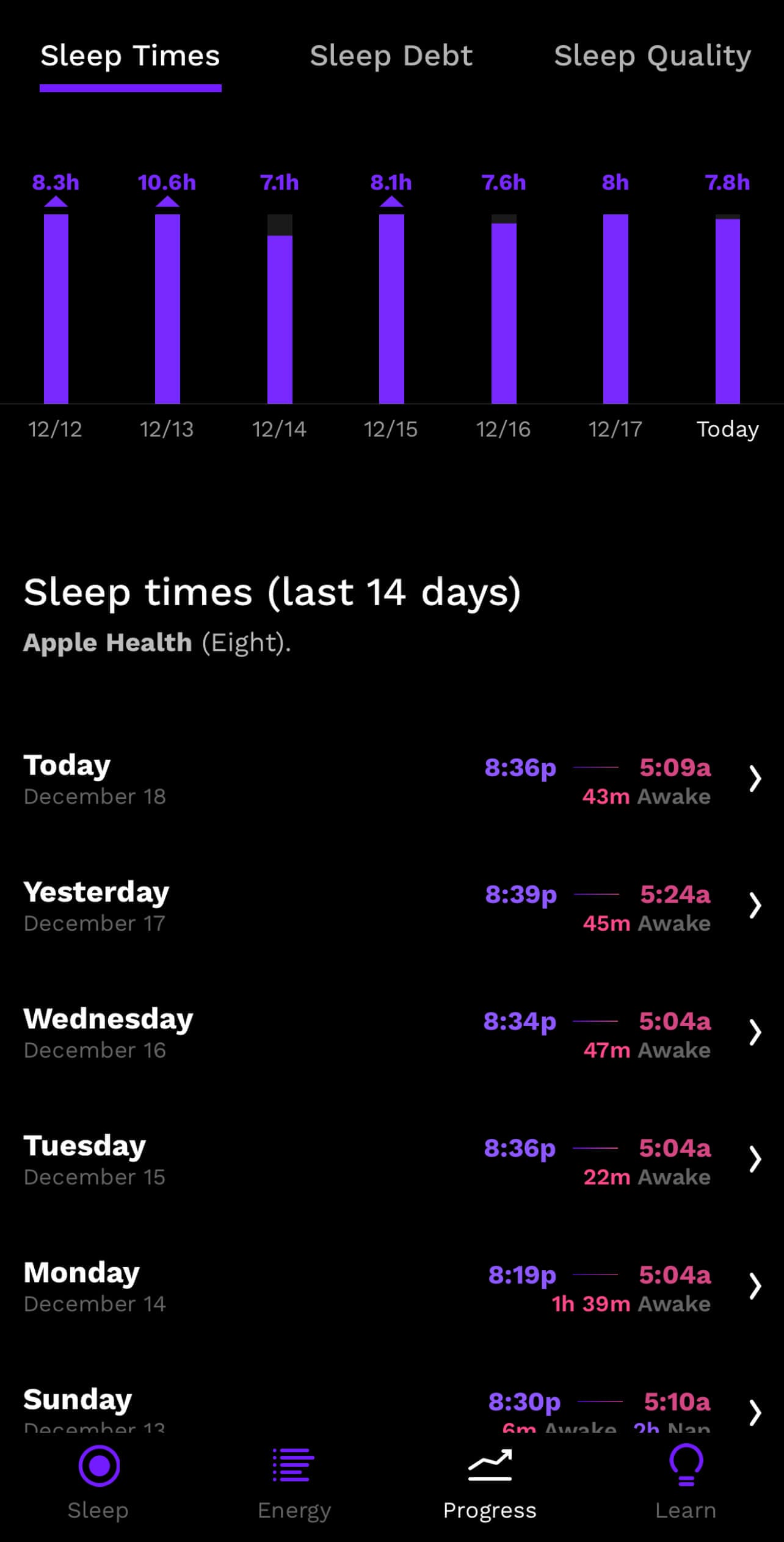
Sleeping well is supposed to be easy. After all, it’s something humans and our ancestors have done for millions of years.
Unfortunately, modern humans have a very hard time doing it.
According to one study, 30% of the population has difficulty initiating and maintaining sleep.
That’s crazy, and a clear indication that the environment we live in isn’t conducive to achieving high-quality sleep.
Here are a few general tips that have helped me fall asleep quicker and stay asleep better.
- Maintain a consistent bed and wake time to support your circadian rhythm.
- Leverage a high-quality melatonin supplement to help reset your circadian rhythm.
- Avoid certain foods and drinks (e.g., caffeine, alcohol and dark chocolate) close to bedtime.
- Leave three to four hours between your last meal and bedtime.
- Expose yourself to natural light in the morning, during the day and at sunset, and reduce your exposure to artificial light in the evening.
- Wear blue light-blocking glasses after sunset.
- Consider sleep technology (e.g., a bed cooling solution) and supplements (e.g., a high quality magnesium supplement like Magnesium Breakthrough) that may help you fall asleep quicker and get more restful sleep.
- Read a book and avoid social media and other sources of information that might stimulate your brain.
Learn More About How to Optimize Your Sleep
If you want to learn more about what I’ve done to improve the quality of my sleep, I encourage you to read the following blog posts:
- How to Sleep Better and Fall Asleep Quicker: If you’re having trouble with sleep, you wake up tired, and you’re frequently exhausted, a few simple lifestyle changes (including maintaining a consistent sleep/wake cycle) will make a big impact.
- Why You Might Have Trouble Falling Asleep: Stress and certain foods and beverages can make it more difficult to fall sleep quickly. Learn more about easy-to-implement tricks that can help you fall asleep faster.
- Review of the Best Bed Cooling Systems: Your body’s temperature undergoes several changes as you fall asleep, and as you cycle between the different stages of sleep. Bed cooling systems are an excellent way to support your body’s ideal temperature during sleep and improve the quality of your sleep.
- Review of the Best Sleep Trackers: Accurate sleep trackers are an excellent way to tell if the changes you’ve implemented have improved the quality of your sleep.
2. Nutrition
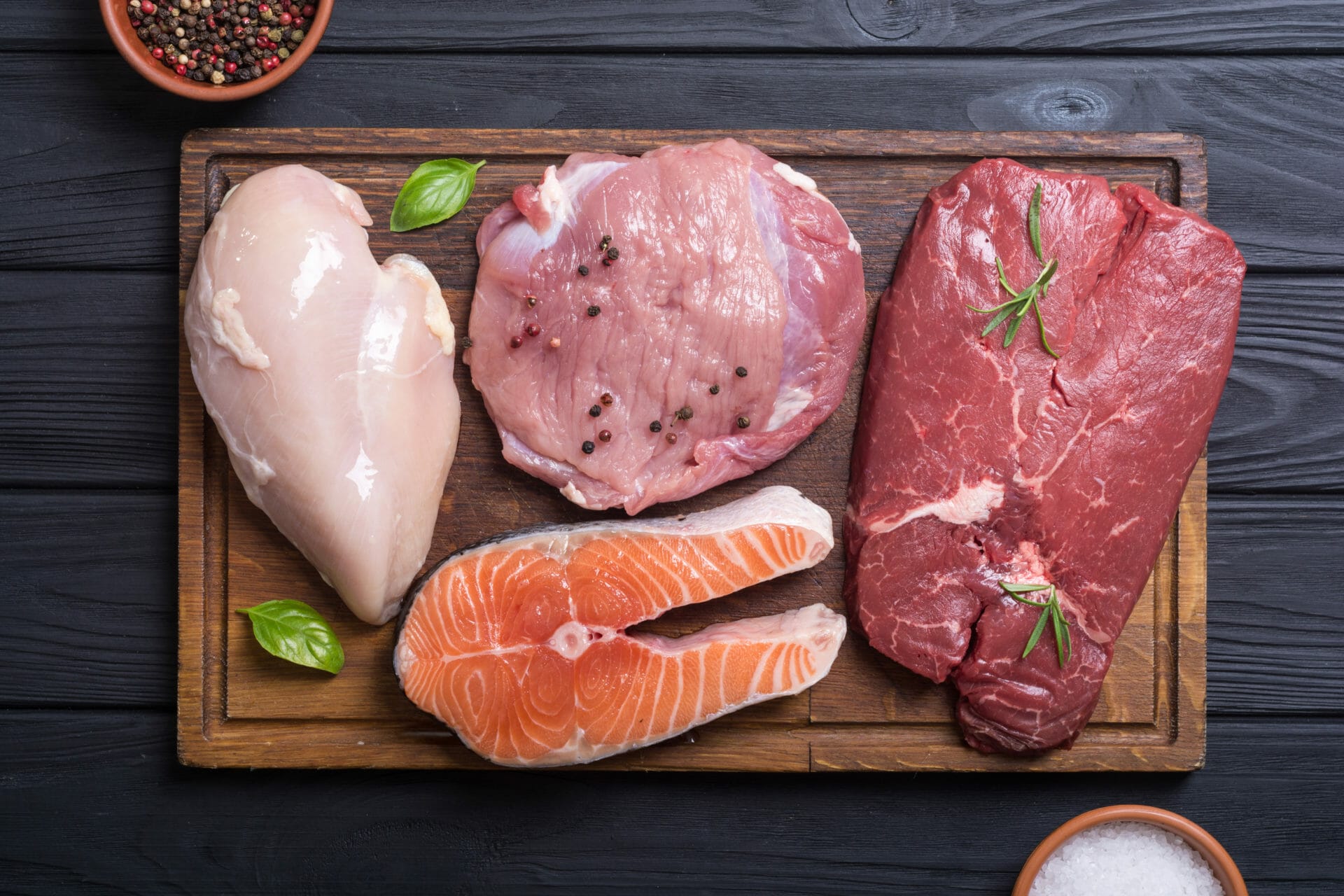
The human body is a piece of incredibly complex machinery that has evolved over millions of years on a simple diet consisting predominantly of animal fats and proteins, as well as some wild-growing seasonal plants (to fill the gaps in case of unsuccessful hunts).
Based on everything we know about the human digestive system and the increase in brain size throughout the course of evolution, it’s safe to assume that humans are carnivores who retained the ability to eat plants as survival food.
While that makes us omnivores by definition, I intentionally use the term carnivores because the human diet is supposed to consist predominantly of animal organs, meat and fat.
Also, no living entity (including plants) wants to be eaten. Animals can fight or run away, but plants cannot. Instead, they have toxins (in the form of phytoestrogens, antinutrients and other chemicals) to defend themselves.
As a result, certain plants can negatively impact your body’s nutrient absorption via antinutrients (nuts, seeds, legumes, grains, leafy greens); cause low-grade inflammation or damage the lining of your intestinal wall (nuts, seeds, legumes, grains, leafy greens); trigger an immune response (gluten, nightshades, etc.); or even cause death (e.g., raw beans).
The only part of plants that nature intended to be eaten are fruits, because doing so supports the spread of their seeds. However, historically, fruits weren’t available year-round and they weren’t as large and sugary as the genetically-modified and selectively-bred fruits that are sold in grocery stores.
The optimal human diet is incredibly simple, but trying to follow it with modern food can be extremely difficult.
Still, it is possible to take steps in the right direction. Below are my top tips for how to improve your health and well-being through your diet.
- Buy food from local farms and businesses to support regenerative agriculture.
- Learn about the differences in food quality, and buy the highest-quality food you can afford.
- Eat animals from nose to tail to mimic the eating habits our ancestors had for millions of years.
- Keep your intake of (processed) carbs low to mimic the relatively small carb loads our bodies evolved on.
- Eat more animals and fewer plants. Plants can’t run or fight, so they use chemicals (toxins) to defend themselves. Those chemicals can cause health issues.
- Avoid foods that are known to cause inflammation, massive spikes in blood sugar, or that disrupt your metabolism, including processed carbs and industrial seed (vegetable) oils.
The good news is that if you eat local and cook your meals from scratch, you’ll automatically avoid most of the items on the list above.
Learn More About How to Optimize Your Diet
To learn more about the science behind the six tips above, check out the following blog posts:
- Health Benefits of Eating Organ Meat: Organ meat is a nutritional powerhouse that offers numerous health benefits. This article highlights the best organs to eat, and explains why you should eat them. If you don’t know where to start or can’t stomach the taste of organ meat, consider supplementing with freeze-dried beef liver capsules.
- Plants vs. Meat – Why I Stopped Eating Veggies: Learn about the scientific rationale behind removing most plant foods from your diet (in favor of muscle and organ meat). In short, plants are poor sources of vitamins and minerals, and they use chemicals (rather than teeth and claws) to deter you from eating them.
- Paleolithic Ketogenic Diet – A Beginner’s Guide: Get started with low-carb high-fat eating and all of its health benefits.
- Top Nutrition Myths Debunked: Learn why so many of the so-called “facts” you’ve been taught about diet and nutrition are dead wrong.
- Why Red Meat Isn’t Bad For You [Top 10 Myths Busted]: The nutritional world is full of dogma and misinformation, and it seems like new studies come out daily, often providing conflicting information. But one thing that multiple studies have made clear is that read meat isn’t the killer many people think it is.
- Saturated vs. Polyunsaturated Fats – What’s the Real Cause of Heart Disease?: One type of food in particular can have a detrimental impact on our health — and I’m not talking about saturated fat, as the American Heart Association and other “trusted” sources for dietary information would have you think.
3. Physical Activity and Exercise

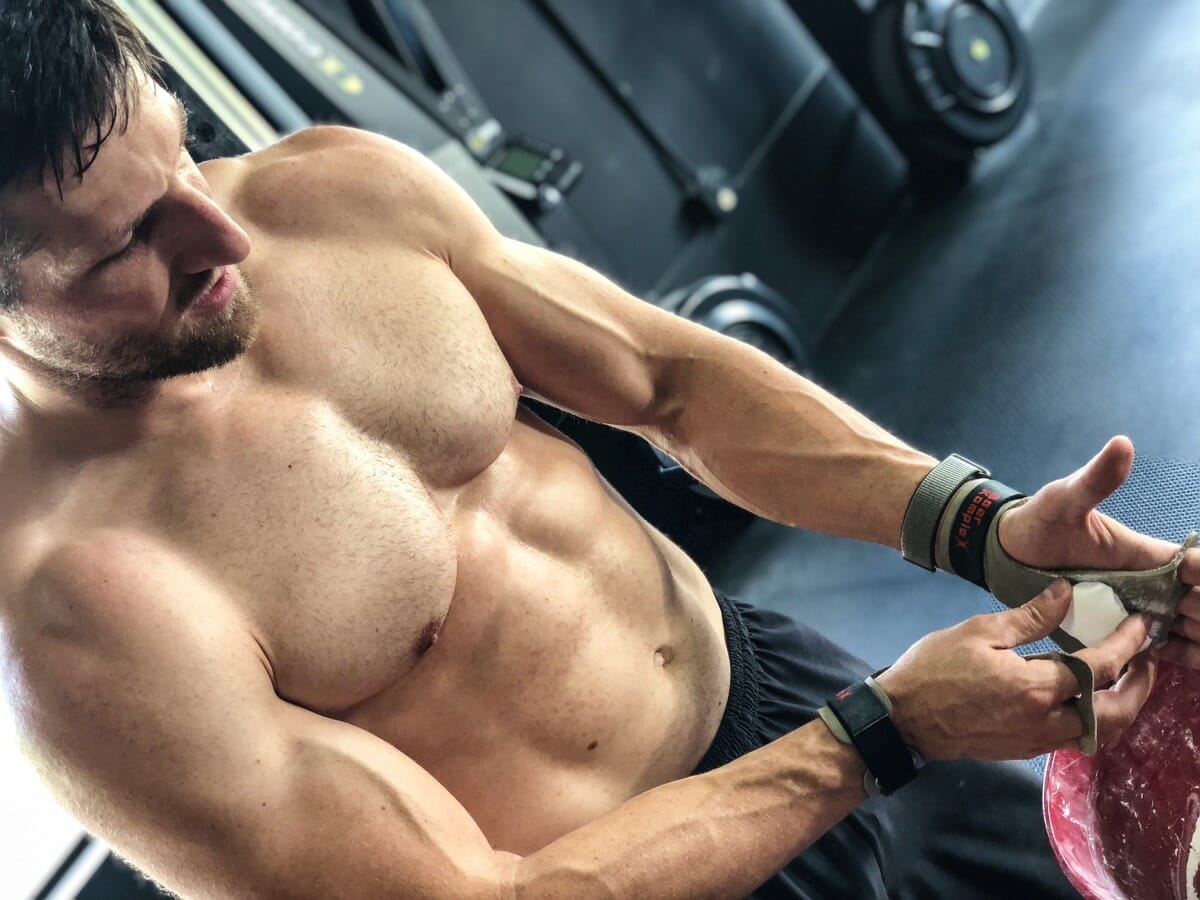
When you see someone with a six-pack and a well-defined physique, you may wonder what they’re doing to look so fit.
Without sounding arrogant, I’ve noticed that people look at me when I take my shirt off. Even at my local CrossFit box, several fellow athletes have approached me to ask what I do to look so ripped.
The funny thing is that “looking fit” is what humans should look like by default, if photos of indigenous people who haven’t been exposed to Western diets are any indication.
Unfortunately, just like low testosterone levels in men and early puberty in girls is considered the norm these days, so too is having a beer belly or muffin top. But these physical states are not normal — we’ve just grown used to them because they’re so prevalent in our society.
“We are a society of Obese, Bloated, Metabolic and Immunological Cripples. This is a direct result of our food, health care and pharmaceutical industries as well as a complete lack of personal responsibility.”
— Dr. Shawn Baker
The problem is that modern society doesn’t require us to walk for hours to find shelter, or to fight for our life as we try to kill an animal for food. As a result, we have to do other things to challenge our bodies physically.
To mimic the physical stress our ancestors were exposed to, I recommend doing some sort of functional fitness routine on most days of the week. For me, that’s CrossFit because it involves movements that I benefit from even when I’m outside of the gym.
Specifically, I like to stress my cardiovascular system with high-intensity interval training and heavy lifting. I also like to sprint, even though I realize the risk of injury increases the older I get.
What I’m not a huge fan of is jogging.
First, that’s because I get bored. And second, because from an evolutionary perspective, humans either walked or sprinted for their lives — there was no reason to waste energy jogging.
I typically work out five to six times a week, and most of those workouts are pretty intense. While that doesn’t completely compensate for the countless hours I spend in front of a computer, it’s the best I can do.
If you don’t have a good fitness routine in place yet (one that makes you break a sweat every day), I recommend signing up for CrossFit, NCFit or some other type of functional fitness program that challenges you and gets you out of your comfort zone.
Here are my top tips to be more physically active:
- Move more by standing up at least once every hour, by parking the car in the farthest spot in the parking lot, and by carrying your groceries by hand.
- Take the stairs instead of the elevator whenever possible.
- Go for a walk after lunch; it helps with digestion, lowers the impact of food on your blood sugar (even if you ate carbs), and helps you to be more active.
- Sign up for a functional fitness class, such as CrossFit.
The more you move, sprint and lift heavy weight as part of your regular life, the less time you need to spend in a gym or CrossFit box. Unfortunately, my life is relatively sedentary, which is why I try to compensate by doing CrossFit several times a week.
Learn More About How to Stay Active
To learn more about how to stay active and fit, check out the following blog posts:
- How to Improve Muscle Recovery: Studies have shown that consuming a 1:1 ratio of fat and protein before or after physical activity can speed up muscle recovery (while carbs often have the opposite effect).
- How to Recover From a Workout Faster: A tough workout adds stress to your body and causes muscle tissue to break down. In other words, working out hard makes you weaker — at least, temporarily. It’s what’s you do before and after a workout that determines if your body can repair the inflicted damage and come out stronger on the other side.
- The Best Diet to Improve Endurance and Strength: Insight into how food impacts your strength and endurance, and whether carbs or fat are better sources of fuel for CrossFit, weightlifting and running.
- What to Drink Before, During and After a Workout: In the early days of professional sports, trainers and athletes didn’t know many of the things that modern science has uncovered. Recent scientific breakthroughs have taken bodybuilding, CrossFit and other sports to the next level. Even casual athletes can easily gain energy, strength, and muscle mass.
- What to Eat Before and After a Workout: As a general rule, when you eat isn’t as important as what you eat. But that’s not true for everyone, and there are certain steps you can take to optimize the effeteness of your workouts (depending on your goals).
4. Stress

Stress is fascinating because while it can be incredibly good for your body it can also wreak havoc on your health, depending on the type of stress and how you perceive it.
If you’re in a life-threatening situation, the way your body responds to stress can mean the difference between life or death. So evidently, stress has an important role to play in certain situations.
But there are less-extreme versions of stress that are also beneficial to your health. For example, strenuous activity (such as a CrossFit workout), puts stress on your body, as does intermittent fasting or caloric-restriction.
But all of these examples make your body stronger and healthier by triggering certain metabolic pathways and chemical reactions that date back to the earliest life on this planet.
So don’t be afraid to expose your body to acute stress.
In contrast, chronic stress is a different ballgame. If you’re stressed 24/7 about factors that are part of our modern daily life — such as medical bills, your kids’ afterschool activities, or your job (just to name a few) — and your stress hormone (cortisol) levels remain elevated for extended periods, your health and well-being will suffer and you might get sick in the long run.
Chronic stress is also strongly correlated with altering your epigenetics and premature aging. The faster your body ages, on a cellular level, the higher your risk of developing a metabolic disease (and ultimately, premature death).
That’s one of the reasons why I follow a well-planned anti-aging regimen, in addition to everything else I’ve mentioned in this article.
While it’s difficult to avoid unhealthy stressors, you can influence how you respond to and perceive stress.
To help me respond to stress factors appropriately, I use the following techniques and tools:
- Sufficient sleep. The better I sleep, the better I manage stress.
- Fuel source management. I handle stress much better when my body is efficiently using the fuel I provide. That means I do really well when I’m running fully on carbs (which doesn’t happen very often) or fat (when I’m deep into ketosis). Sometimes, I eat just enough carbs (during “cheat” days), to temporarily kick me out of ketosis, but without satisfying the fuel demands of my brain. During that time, I get irritated more easily — a condition that typically lasts for a few hours (until I’m back into ketosis or consume more carbs). To avoid such situations, I usually consume only fat and protein during the day, followed by 50-100 grams of carbs for dinner.
- Physical activity. Working out helps me relieve stress and calm down.
- Deep breathing. Taking a break during the day to breathe deeply for a couple of minutes helps me relax and “flush out” some of the cortisol from my bloodstream.
- Use of neuroscience devices. I use neuroscience technology (such as the Apollo wearable) to help me relax. You can learn more in my roundup of the best gadgets for stress relief.
- Going outside: During the warmer months of the year, I take a 20-minute break after lunch to go outside and disconnect from everything else that’s going on. Weather permitting, I take off my shirt and let the sun heat up my skin. During the colder months of the season, I take my MacBook, a blanket and a cup of coffee, and spend an hour on the porch, writing for my blog as I watch the sun rise.
While there are certainly countless other techniques that can help you reduce or better manage your stress, the strategies outlined above have worked well for me and I encourage you to give some of them a try.
5. Environmental Toxins (Xenoestrogens)
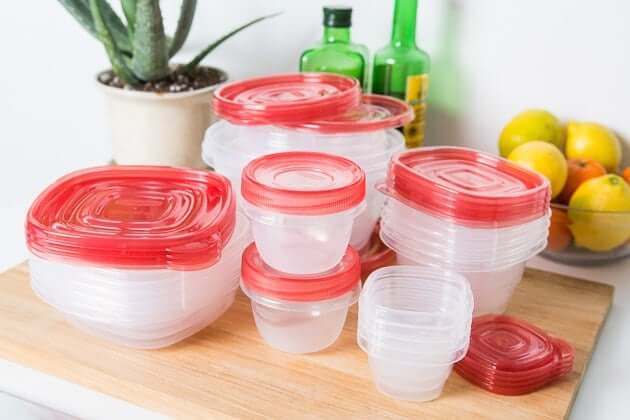
You might not be aware of it, but you’re likely exposed to high amounts of environmental toxins every day, stemming from common household products.
While the list of toxins is long, this section focuses on one particular type of toxin that has the potential to wreak havoc on your endocrine system (i.e., your hormones).
I’m referring to estrogenics — also known as xenoestrogens or fake estrogen.
Over the past few years, I’ve had a handful of “Holy shit, why didn’t I know about this before” experiences that dramatically and permanently changed the way I live.
The first was when my wife and I started cutting out all added sugars. Then came the paleo diet, intermittent fasting and the ketogenic (paleo) diet. And then recently, I learned about how most of the plastics and skincare products we used in our household contained chemicals that bind to the estrogen receptors in our bodies.
As you may know, estrogen is an important sex hormone that controls a number of chemical processes in the body in both females and males. Estrogen (and estrogen-mimicking hormones) are so powerful because virtually every cell in the body has an estrogen receptor.
When those fake estrogen molecules latch on to a cell, they wreak havoc in the endocrine system.
This can result in numerous issues, including:
- Infertility and low sperm count.
- Pregnancy complications.
- Low testosterone in men.
- Growth of male breasts.
- Impaired weight loss or fat accumulation.
- Increased risk of developing metabolic diseases (especially cancer).
- Increased risk of blood clotting (that can lead to stroke or heart attacks).
- Impaired immune system and increased risk of developing allergies.
- Increased risk of depression.
The problem is that estrogenics are everywhere — even in places where you would have never expected such toxins.
Don’t believe me?
Here are just a few of the items that contain these endocrine-disrupting chemicals, many of which are also in the products we used to use regularly in the Kummer household:
- Clothing.
- Drinking water (both city water and bottled water).
- Food (with artificial colors).
- Plastic food storage containers (including the ones labeled BPA-free).
- Skincare products (soap, lotion, sunscreen, deodorant, perfume).
- Toothpaste (including kids’ toothpaste).
- Toys.
- Wrapping and packaging of processed foods.
It’s obviously bad if the product you ingest, or rub or spray on your skin, is estrogenic. But it’s also important to understand that these chemicals can leach from plastic into whatever the plastic comes in contact with (e.g., food and beverages).
While that “leaching” is more prevalent at high temperatures, at least one study has shown that most plastics also leach estrogenics at room temperature.
I go into much more detail in my article that explains the dangers of estrogen-like chemicals in our environment, and a YouTube video I recorded the outlines the specific changes my wife and I have been making to remove as many of them from our household as possible (which has turned out to be an expensive and time-consuming undertaking).
For now, here’s an overview of the actions we’ve taken so far:
- Stop using plastic food storage containers and water bottles.
- Swap out all skincare products that contain estrogenics, fragrances and other toxins.
- Stop using all products that contain artificial fragrances.
- Avoid soy, flax and lavender. All three are highly estrogenic and should be avoided.
- Buy organic fruits and veggies to reduce your exposure to estrogenic herbicides.
- Avoid grains, because they’re sources of estrogenic fungi.
- Don’t buy products that contain artificial food coloring, such as RED No.3 and RED No. 40.
- Consider non-hormone based contraceptives because the traditional pill is highly estrogenic by definition.
- Filter your drinking water. (We use a whole-house water filtration system from Radiant Life.)
6. Hormesis
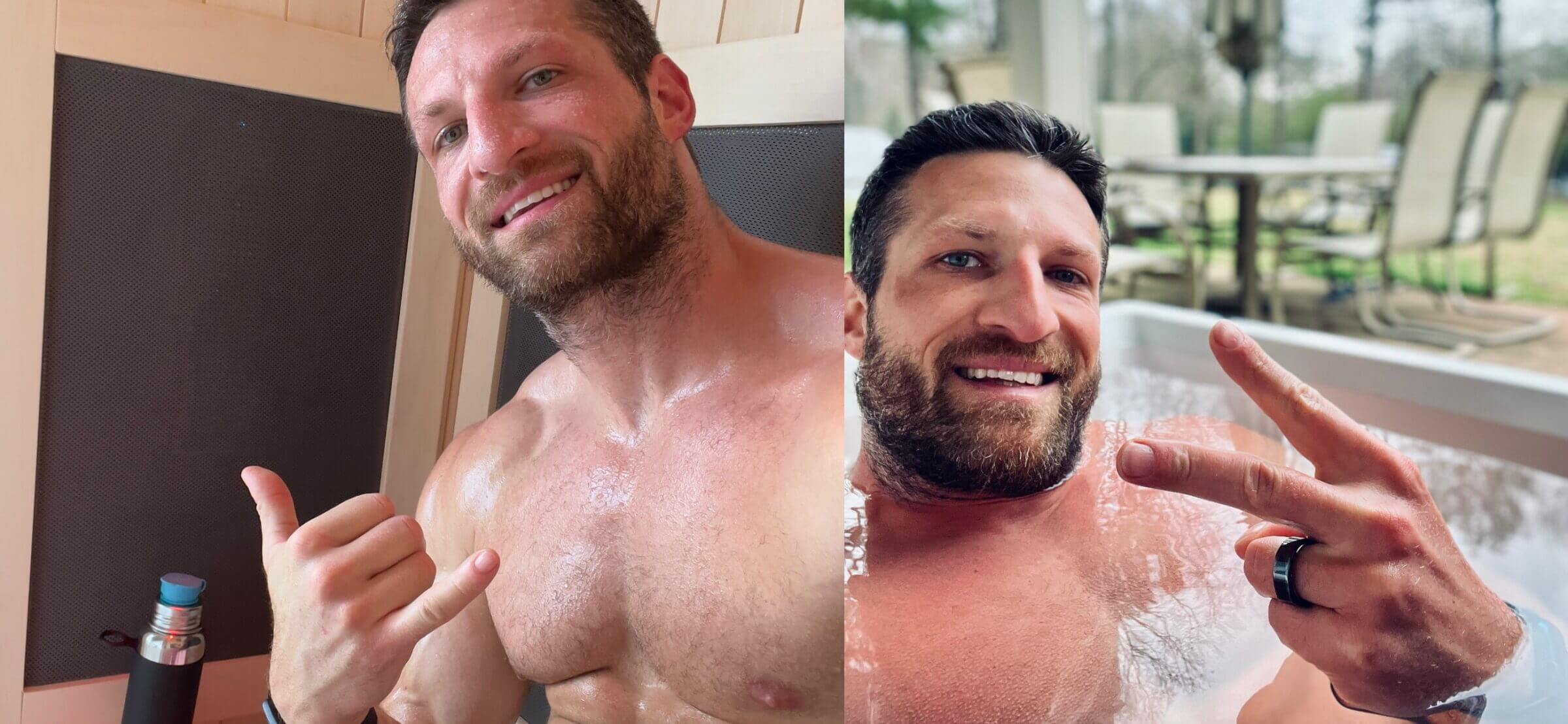
Your body’s ability to adapt to environmental stressors — like extreme temperature changes — and become more resilient is an important aspect of staying healthy and slowing down aging. This process is called hormesis, and it can positively influence your well-being in a number of different ways.
For example, one excellent way to prevent the weakening of bones (and the loss of bone mass) is to regularly lift heavy weights.
When you stress your bones, your body overcompensates by making them denser and stronger. Unfortunately, the opposite is also true: if you don’t lift heavy weights, your bones will become weaker and less dense over time.
That’s one of the reasons why even astronauts incorporate weight training into their regimens while they’re in space. If they didn’t, their bone mass would shrink dramatically due to the lack of gravity.
Here are the things I do on a regular basis to leverage hormesis in a effort to nudge my body to become more resilient:
- Cold plunging: I regularly jump into my cold plunge tub to expose my body to uncomfortably low temperatures. If cold plunging isn’t an option for you, try taking cold showers every day!
- Sauna bathing: I have a Sunlighten infrared sauna in my backyard that I use several times a week to expose my body to higher-than-normal temperatures. Sometimes, I even combine cold plunging with sauna bathing to amplify their individual benefits.
- Intermittent fasting: I intermittently fast almost every day by skipping breakfast, and sometimes my fasts last for several days. Not eating stresses the body, but it also activates ancient cell repair and recycle mechanisms (a process known as autophagy) that make me stronger and reduce the risk of developing a chronic disease. You can learn more about about this process in my beginner’s guide to intermittent fasting.
- Intense workouts: Strenuous workouts stress the body by damaging muscle tissue and pushing your cardiovascular system to its limits. Both actions trigger your body to overcompensate in order to better handle similar challenges in the future. I strategically challenge my body physically several times a week and, as a result, I’m fitter now than I was 20 years ago.
When incorporating stressors like the ones mentioned above into your routine, make sure not to overdo it. Your body needs time to recover in between those stressors, or it won’t adapt and become more resilient. For example, overtraining can easily lead to injury and a weakening of your body.
Also keep in mind that if you’re already under chronic stress due to work or other lifestyle factors, piling on additional stressors, such as fasting or intense workouts, might not be a good idea. Always listen to your body.
Last but not least, not all stressors are good for your body. For example, consuming alcohol and smoking cigarettes cause stress, but they won’t make you any stronger or more resilient.
Learn More About How to Leverage Hormesis
To learn more about the positive stressors I leverage to become more resilient, check out the following blog posts:
- Benefits of Using a Sauna and Ice Bath Together: Both sauna bathing and cold plunging have several scientifically-proven health benefits, but combing them amplifies some of those benefits and make them even more effective.
- Health Benefits of Ice Baths and Cold Plunging: Exposing your body to ice-cold temperatures has several scientifically-proven health benefits, as I explain in this article.
- Benefits of Altitude and Intermittent Hypoxic Training: Training at altitude — or simulating it by breathing air with lower-than-normal amounts of oxygen — improves blood flow and increases the body’s oxygen-carrying capacity, thus improving endurance and aerobic performance.
- Health Benefits of Infrared Saunas: Infrared saunas are an excellent tool to improve blood flow, increase resilience and balance the immune system. They can also help you relax and detoxify your body.
- Intermittent Fasting [Ultimate Beginner’s Guide]: Abstaining from food for 12 hours or more is an easy yet effective way to improve your gut health, help your burn fat, and make you more insulin sensitive.
7. Belonging and Tribalism

Throughout evolution, living in tribes has helped ensure our survival. While some cultures still rely on tribes, many modern societies have experienced a deterioration of family structures. Some people even choose to stay single instead of starting a family and building a tribe of their own.
Perhaps one of the reasons for that phenomenon is the fact that our modern lives allow us to be single without risking starvation, or any of the other perils our ancestors would have faced if they had tried to live without a support system around them. Plus, there’s a certain convenience factor in not having to worry about the wants and needs of someone else.
However, I strongly believe that humans are not meant to be alone, and that the last few years have exposed the consequences of living in isolation (and without an emotional support net).
While I haven’t been struggling emotionally as much as many other people I know, both my wife and I have noticed the consequences of not having family around as much as we used to.
As you may know, I’m an immigrant from Austria and my wife moved here from Costa Rica. But both our families still live in our respective home countries, and it’s been challenging trying to live the life we want without having them nearby.
Between writing for my blog, launching a supplements business, running a homestead and toying with the idea of homeschooling our kids, there simply aren’t enough hours in the day to take care of everything.
In other words, the more we try to live how humans are supposed to live, the more apparent it becomes that we need a tribe around us to do so.
But even if living like our ancestors isn’t your goal, you may have realized that not having like-minded people around you makes life less enjoyable. For some, the isolation of the past few years has lead them end their own lives. I’m not talking about suicide statistics in general, but about several people I knew personally that recently committed suicide.
All of them mentioned the isolation and lack of personal contact over the past few years as one of the reasons for their actions.
The bottom line is that we need a tribe — a group of like-minded people — for support and emotional fulfillment.
According to the National Alliance on Mental Illness, one in five adults in the United States experienced a mental illness in 2020 and over 12 million of them had serious thoughts about suicide.
Those numbers represent an epidemic, and I’m convinced our modern lifestyle and a lack of tribal connections are major factors in the decline of our overall mental health.
8. Reconnect With Nature
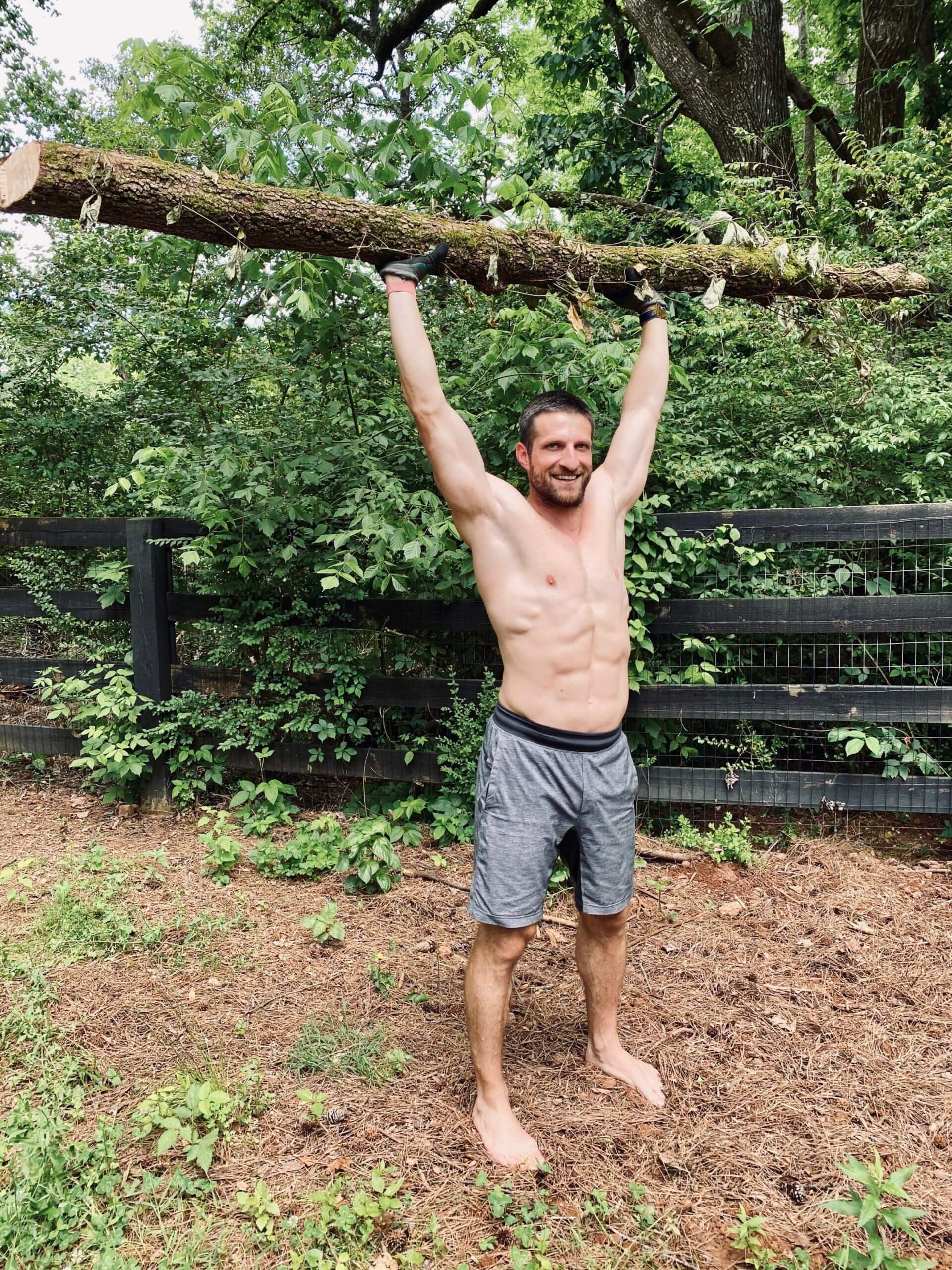
Compared to millions of years of human evolution, living in climate-controlled homes that are contaminated with mold and other toxins, as well as wearing sunscreen, clothing and sunglasses that prevent sunlight from interacting with the cells in our skin and retina, are fairly recent phenomena.
While all these inventions appear to have improved the quality of our lives, they have also negatively impacted our health.
For example, have you ever wondered why melanoma (a type of skin cancer) was a rare occurrence in the early 1900s (long before sunscreen was invented) and only became more prevalent in the last few decades — even though the use of sunscreen increased dramatically over that period?
Or why office workers are at greater risk of developing melanoma than those who work outside?
The bottom line is that humans thrive when they’re connected to nature, because that reflects the environment we evolved in. Changing that environment often has negative consequences, some of which you might not notice immediately but which can do significat damage over time.
While it’s nearly impossible (and for most people, undesirable) to live in a cave while wearing animal skins for clothing, there are many things you can do to stay connected with nature and maintain optimal health.
Here is a list of things I do on a regular (sometimes daily) basis:
- Expose as much of your bare skin to sunlight every day as possible. Sunlight is vital for maintaining a healthy circadian rhythm and for numerous metabolic processes in the body, including vitamin D and testosterone production. If you burn easily, it’s a sign of metabolic dysfunction likely caused by way too much omega-6 polyunsaturated fatty acids in your diet. I used to burn so quickly that I began avoiding the sun until I changed my diet. These days, I barely use sunscreen (only if I’m in the sun all day) and I never get sunburns.
- Walk barefoot. Allowing your feet to come in direct contact with the soil (known as earthing or grounding) has several scientifically-proven health benefits, including improved sleep, an increased HRV, lower inflammation and more. So take off your shoes at least once a day and walk around barefoot in your backyard or on a patch of grass or dirt. Most shoes aren’t good for the health of your feet anyway, and walking barefoot reverses some of the damage done by modern shoes. (I’ve recently started wearing minimalist shoes from Peluva.)
- Breath fresh air. The air in most homes is contaminated with mold, volatile organic compounds (from paint, cleaners, gas-burning stoves and fireplaces, etc.), and dust and other particles that can negatively impact your health. While whole-house air purification systems like the HypoAir Bi-Polar that we use in our home can help, the air outside is often cleaner than than the air inside. That’s why I recommend spending as much as time as possible outside of your home and in nature. Of course, if you live in Manhattan or other densely populated areas, the outside air might be more polluted than the inside air.
- Disconnect. The best way I’ve found to disconnect (from electronic devices and my regular routine, in general) is to be in nature. Watching wildlife while actively listening and smelling what’s around me allows me to be present, and that has a profound impact on my mental health and well-being. So I encourage you to go outside and (re)discover nature — either alone or together with friends and family.
Frequently Asked Questions
I truly believe that sleep is the foundation of everything you do during the day. So I’d start by focusing on establishing a consistent sleep and wake time, and more generally on improving the quality of your sleep. I would definitely not cut my sleep short for other measures, such as exercise.
Being unable to stay away from certain foods, especially sugar, has nothing to do with willpower. Rather, it’s the result of an addiction caused by a complex interplay of chemicals in your body. So don’t beat yourself up about it. Recognize the addiction and find healthy substitutes for the foods you can’t seem to live without.
As far as sugar and sweets are concerned, consider natural, non-caloric sweeteners for a while (such as monk fruit extract and stevia).
Check out the recipe section on this blog for some treats that we enjoy frequently.
The fact that a product is labeled “vegan” doesn’t mean that it’s safe or healthy. For a skincare product to be safe, it shouldn’t contain parabens, fragrances, lavender or anything that contains the words “phen,” “benz” or “oxy.” You’ll be surprised at how few products match those criteria.
Check out the Made Safe webpage and the Think Dirty smartphone app to find non-toxic products.
All plastics have been shown to leach estrogenic chemicals. But there are a few plastics that are better than others.
As a rule of thumb, stay away from all plastics that have the following recycling numbers: #1, #3, #4, #6 and #7.
#2 and #5 are less problematic. But that doesn’t make them safe — just less toxic.
Scientific research is an incredibly competitive field where bias and conflict of interest are difficult to avoid. Additionally, the two major sources of funding for large studies are governments and private corporations. That means getting funded often requires researchers to play by the rules of whoever is funding the study.
That’s obviously a problem, and often results in studies that aren’t well designed, are influenced by interest groups, or have other flaws.
That means if you want to truly understand the results of a study (and the implications of those results), you have to read the full text (not only the abstract), figure out who would benefit from the results (i.e., is there a potential conflict of interest), and ask the right questions.
Most of us don’t have the expertise to do that. Certainly, the mainstream media doesn’t. That’s why I usually disregard headlines such as “low-carb diets might shorten your life, study says.”
In case you’re wondering, the claims made by the authors of that particular study have been debunked.
The bottom line is that I have done my best to present the best and most reliable evidence I can find. But I encourage you to do your own research, and to always ask questions if something doesn’t seem to make sense.
The best diet for humans is the one that we and our ancestors have eaten for millions of years, before we started thinking we can outsmart nature.
If you look back at how humans have evolved, you’ll realize that we’ve eaten a diet high in animal products (protein and fat) and relatively low in carbs. Plants were a necessary survival food to fill the gaps between successful hunts.
I call this the paleolithic ketogenic diet and it’s more a framework than a specific diet.
Alcohol is a toxin, but I don’t think having a glass of wine every day is going to completely derail your healthy living efforts. I do recommend leaving as much room as possible between alcohol consumption and bedtime, because while alcohol makes you sleepy, it actually disrupts your restorative stages of sleep.
If you’re concerned about the impact of alcohol on your health, but don’t want to give up having an occasional drink, consider trying Hard Ketones. It’s made from a type of real alcohol that doesn’t cause the same negative health outcomes as “regular” alcohol. (The one downside being its relatively high price compared to traditional alcoholic drinks.)
Probably not. Much like the reference values on your blood panel, BMI can be a useless metric to judge if someone has a healthy weight. My BMI is 27.3. On paper, that means I’m overweight. If you’ve seen me in a bathing suit, you’d probably disagree.
I think doing so is a waste of time. The concept of eating fewer calories than you burn to lose weight is flawed for several reasons. Plus, counting calories is cumbersome and unsustainable.
Instead, I recommend focusing on eating high-quality foods that are high in fat and low in carbohydrates. Of course, overeating can be a problem. But that doesn’t mean you have to leave the table feeling hungry. Just stop eating when you feel satisfied.
In some jurisdictions, including the European Union, many of the environmental toxins I mentioned above are banned or have low limits. Unfortunately, that’s not the case in the United States, where there are either no such laws in place or where the limits are ridiculously high.
Maybe, but probably not. Most of the foods that are labeled as “healthy” aren’t, and many of the foods that are labeled as unhealthy are. Examples of supposedly healthy foods that you should avoid include soy, whole grains (brown rice, quinoa, etc.), legumes and many other plants.
Examples of supposedly unhealthy foods that are in fact healthy include saturated fats, eggs and red meat. (But opt for pasture raised eggs if you can.)
They’re useless and a waste of time. If you want to improve your health and well-being, you have to adopt healthy habits and implement lifestyle changes that last for as long as you live.
Of course, you can modify and adapt those habits over time as you learn and gain more information. But starting a diet on January 1st that lasts only 30 days is a waste of time.
Conclusion: How to Live a Healthier Life

If you’ve come this far, you’ve probably realized that living healthy isn’t easy. You don’t have to be a rocket scientist to implement the recommendations I’ve laid out in this article, but even basic needs like having access to clean drinking water are difficult to fulfill.
At times, it might seem almost impossible to do the right thing as far as supporting our health and well-being is concerned. It’s easy to get overwhelmed.
That’s why I recommend taking small steps, going after the lowest hanging fruits first, and doing it together with someone who shares your desire to improve. That could be your partner, your child or your best friend.
Now it’s your turn.
Make a roadmap together that illustrates where you currently are, where you want to go, and how you want to get there — and mark all the milestones you want to reach along the way.
Let me know where you currently are in your journey towards better health, what your struggles are, and how I can help you move forward. Just leave a comment below or shoot me an email!

Michael Kummer is a healthy living enthusiast and CrossFit athlete whose goal is to help people achieve optimal health by bridging the gap between ancestral living and the demands of modern society.
Medical Disclaimer
The information shared on this blog is for educational purposes only, is not a substitute for the advice of medical doctors or registered dieticians (which we are not) and should not be used to prevent, diagnose, or treat any condition. Consult with a physician before starting a fitness regimen, adding supplements to your diet, or making other changes that may affect your medications, treatment plan or overall health. MichaelKummer.com and its owner MK Media Group, LLC are not liable for how you use and implement the information shared here, which is based on the opinions of the authors formed after engaging in personal use and research. We recommend products, services, or programs and are sometimes compensated for doing so as affiliates. Please read our Terms and Conditions for further information, including our privacy policy.
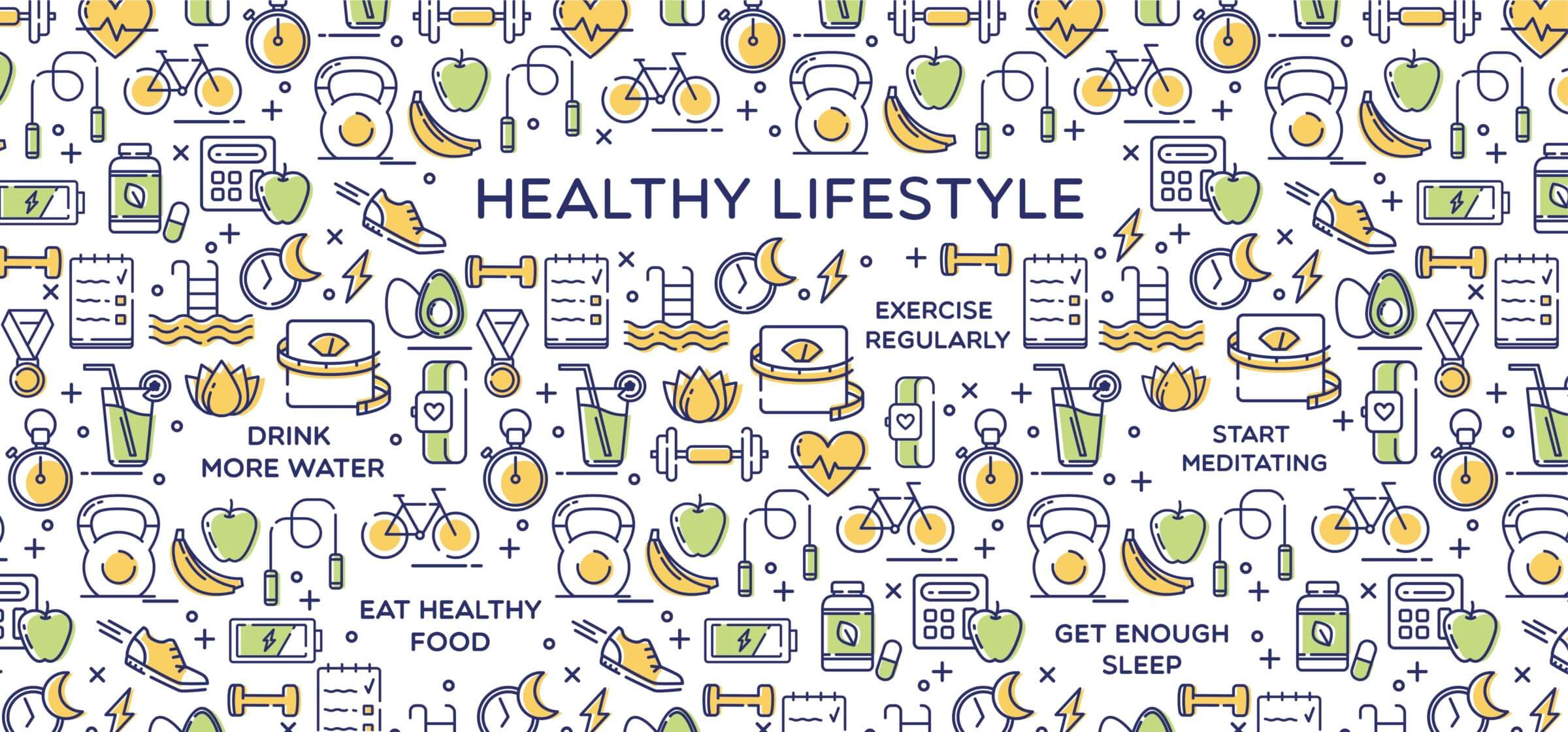
Hi! thanks for such a good article, if i press juice the plants like spinach or kale, will they still have the antinutrients on the juice? I´ve heard many people with IBS cant digest plants good except if they juice them.
Raw juices made from leafy greens and other toxic plants are terrible for your stomach and I would 100% avoid them. No idea how anyone with IBS would feel good with that :)
Hey, I’ve been reading a lot of your articles and doing some of my own research on better eating habits/life habits in general. I don’t have much money for high quality meats, and I was wondering what your thoughts on brown rice, homemade bread, and oats are. I’ve always heard these are healthy, and I can’t really afford to eat good meats more than 4-5 days a week. What would you advise (instead of making more money haha) – Alex
Hey Alex!
I’d recommend meat from grain-fed cows over any plant-based foods. If you go to Costco, Aldi or even Walmart you can get some decent options. All three also have pasture-raised meats for prices that almost match grain-fed meat.
Regarding rice, I recommend white over brown because the latter is full of anti-nutrients and defense chemicals. Homemade bread is OK if it’s double-fermented sourdough bread. Oats can be OK too if you prepare them properly. Check out Dr. Bill Schindler’s book on how to prepare certain plant-based foods to make them compatible with out physiology: https://eatlikeahuman.com.
I hope that helps!
Cheers,
Michael
Really very useful health notes! I try to follow as much as I can! Thank you very much! ??❤️
Thanks so much for the feedback. I’m really glad you found my post helpful!
This Article helps me in many ways for maintaining my good health. Thank you for sharing your insights about how to live a healthier lifestyle.